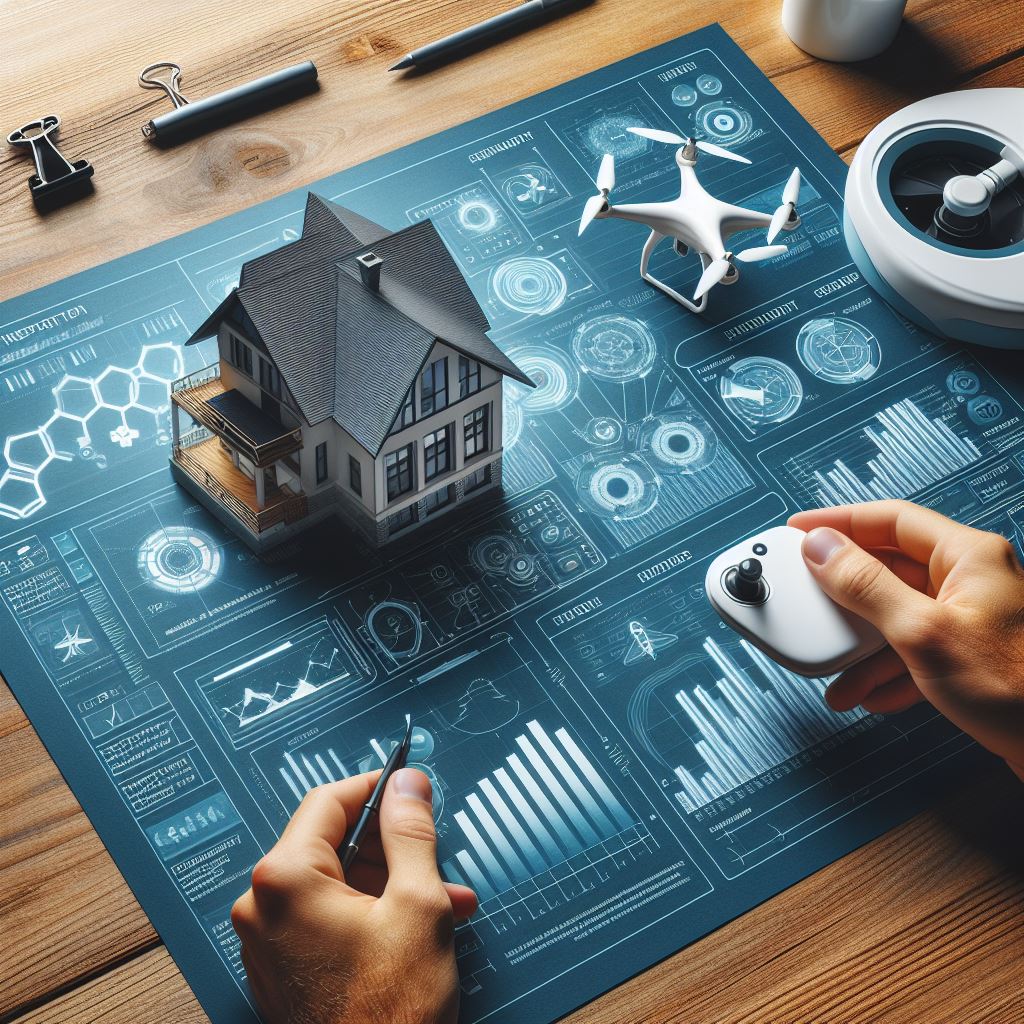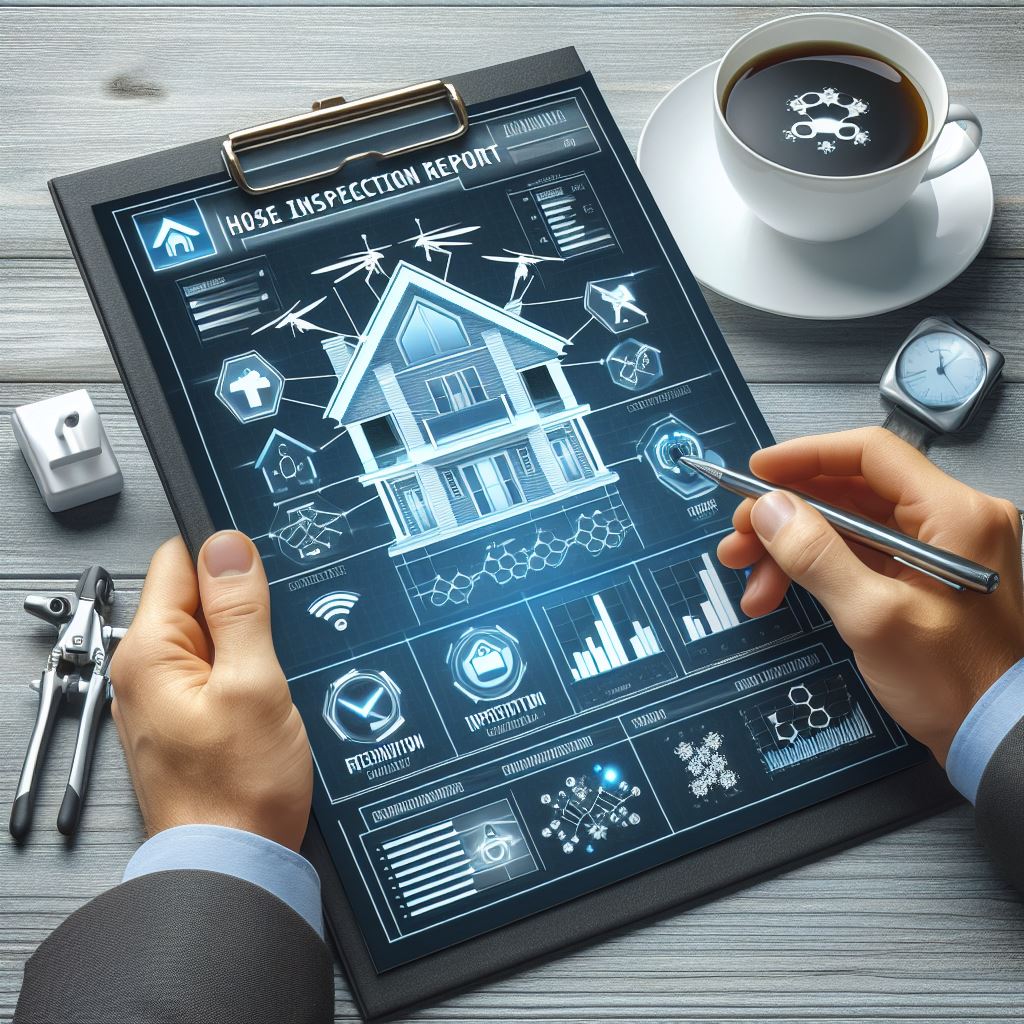The Benefits of Home Inspection Technology in Reducing Inspection Costs
Home inspection technology has revolutionized the way inspections are conducted, providing numerous benefits to both inspectors and homeowners. One of the most significant advantages of using home inspection technology is the reduction in inspection costs. This article will explore the various ways in which home inspection technology has helped to lower inspection costs, ultimately benefiting homeowners.
Firstly, home inspection technology has streamlined the inspection process, allowing inspectors to complete their work more efficiently. In the past, inspectors relied on manual methods, such as taking notes and photographs, which were time-consuming and prone to errors. With the advent of technology, inspectors can now use digital tools to record their findings, take high-quality photographs, and even create detailed reports on-site. This not only saves time but also reduces the need for additional visits, thereby lowering inspection costs.

Furthermore, home inspection technology has improved the accuracy of inspections, minimizing the chances of overlooking potential issues. Inspectors can now use advanced tools, such as thermal imaging cameras and moisture meters, to detect hidden problems that may not be visible to the naked eye. By identifying these issues early on, homeowners can address them before they become more significant and costly to fix. This proactive approach not only saves homeowners money in the long run but also reduces the need for extensive repairs, ultimately reducing inspection costs.
In addition to improving accuracy, home inspection technology has also enhanced the quality of inspections. Inspectors can now access vast databases of information, such as building codes and regulations, to ensure that properties meet the required standards. This comprehensive knowledge allows inspectors to provide more detailed and thorough reports, which can be invaluable to homeowners. By having access to this information, homeowners can make informed decisions about their properties, potentially avoiding costly mistakes. This level of expertise and guidance ultimately reduces the need for additional inspections, saving homeowners money.
Another way in which home inspection technology reduces inspection costs is through increased transparency. In the past, homeowners often had to rely solely on the inspector’s verbal explanations and written reports. However, with the use of technology, homeowners can now access digital reports, complete with photographs and detailed descriptions of any issues found during the inspection. This transparency allows homeowners to better understand the inspection findings and discuss them with contractors or other professionals, potentially reducing the need for additional inspections or unnecessary repairs. By having all the necessary information at their fingertips, homeowners can make more informed decisions, ultimately saving money on unnecessary expenses.
Lastly, home inspection technology has also facilitated remote inspections, further reducing costs. In certain situations, such as during a pandemic or when the property is located in a remote area, it may be challenging for an inspector to physically visit the property. However, with the use of technology, inspectors can now conduct virtual inspections, using video calls and specialized software to guide homeowners through the process. This not only saves time and travel expenses but also allows homeowners to receive timely and accurate inspections without the need for an in-person visit.
In conclusion, home inspection technology has significantly reduced inspection costs by streamlining the process, improving accuracy, enhancing the quality of inspections, increasing transparency, and facilitating remote inspections. By leveraging these technological advancements, homeowners can save money on unnecessary repairs, avoid costly mistakes, and make informed decisions about their properties. As technology continues to advance, the benefits of home inspection technology in reducing inspection costs will only continue to grow.
How Home Inspection Technology Can Save You Money on Inspection Services
Home inspection technology has revolutionized the way inspections are conducted, providing homeowners with a cost-effective solution to ensure the safety and quality of their homes. With the advancements in technology, home inspections have become more efficient, accurate, and affordable. This article will explore how home inspection technology can save you money on inspection services.
One of the main ways that home inspection technology reduces inspection costs is by streamlining the inspection process. In the past, home inspections were a time-consuming and labor-intensive task. Inspectors had to manually inspect every aspect of the home, taking notes and photographs along the way. This process often required multiple inspectors and took several hours or even days to complete. However, with the advent of technology, home inspections can now be completed in a fraction of the time.

One of the key technologies that have revolutionized home inspections is thermal imaging. Thermal imaging cameras can detect temperature differences in a home, allowing inspectors to identify potential issues such as insulation gaps, water leaks, and electrical problems. By using thermal imaging technology, inspectors can quickly identify problem areas without the need for invasive and time-consuming inspections. This not only saves time but also reduces the need for additional inspections, ultimately saving homeowners money.
Another way that home inspection technology reduces costs is by improving accuracy. Traditional home inspections relied heavily on the inspector’s expertise and observational skills. However, human error and oversight were always a possibility. With the introduction of technology, inspections have become more precise and reliable. For example, drones equipped with high-resolution cameras can capture detailed images of a home’s exterior, allowing inspectors to identify potential issues that may not be visible from the ground. This level of accuracy ensures that no issues go unnoticed, saving homeowners from costly repairs down the line.
Furthermore, home inspection technology has also made it easier for homeowners to understand the inspection process and the findings. In the past, homeowners often had to rely on the inspector’s verbal explanations or written reports, which could be confusing and overwhelming. However, with the use of technology, inspectors can now provide homeowners with visual aids such as photographs, videos, and interactive reports. These tools make it easier for homeowners to understand the inspection findings and prioritize any necessary repairs or improvements. By having a clear understanding of the inspection results, homeowners can make informed decisions and avoid unnecessary expenses.
In conclusion, home inspection technology has significantly reduced inspection costs by streamlining the process, improving accuracy, and enhancing homeowners’ understanding of the inspection findings. With the use of thermal imaging, drones, and visual aids, inspections have become more efficient, reliable, and cost-effective. Homeowners can now save money on inspection services by leveraging these technological advancements. By investing in a home inspection that utilizes the latest technology, homeowners can ensure the safety and quality of their homes while also saving money in the long run.
Exploring the Cost-Effective Solutions Offered by Home Inspection Technology
Home inspection technology has revolutionized the way inspections are conducted, offering cost-effective solutions that benefit both homeowners and inspectors. With advancements in technology, traditional methods of home inspection have been replaced by more efficient and accurate techniques. This article explores the various cost-effective solutions offered by home inspection technology and how they have reduced inspection costs.

One of the most significant advancements in home inspection technology is the use of drones. Drones equipped with high-resolution cameras can capture detailed images of a property’s exterior, including the roof, gutters, and chimneys. This eliminates the need for inspectors to physically climb ladders or access hard-to-reach areas, reducing the time and effort required for inspections. By using drones, inspectors can cover larger areas in a shorter amount of time, resulting in cost savings for both homeowners and inspectors.
In addition to drones, thermal imaging cameras have become an essential tool in home inspections. These cameras can detect temperature variations in a property, revealing hidden issues such as water leaks, insulation problems, or electrical faults. By identifying these issues early on, homeowners can address them before they become more significant and costly problems. Inspectors can quickly scan a property using thermal imaging cameras, saving time and reducing the need for invasive inspections. This not only reduces inspection costs but also provides homeowners with peace of mind knowing that potential issues have been identified.
Another cost-effective solution offered by home inspection technology is the use of mobile apps and software. These tools allow inspectors to create digital reports on-site, eliminating the need for manual paperwork and reducing administrative costs. Inspectors can input data, take photos, and generate comprehensive reports that can be easily shared with homeowners. This streamlines the inspection process, making it more efficient and cost-effective.
Furthermore, home inspection technology has also improved the accuracy and reliability of inspections. For example, moisture meters can detect hidden moisture in walls or floors, which can lead to mold growth or structural damage. By identifying these issues early on, homeowners can take preventive measures, saving them from costly repairs in the future. Similarly, gas detectors can identify gas leaks, ensuring the safety of homeowners and reducing the risk of accidents. These advanced tools provide inspectors with accurate data, allowing them to provide more precise and reliable inspection reports.
Moreover, home inspection technology has also facilitated remote inspections. With the use of video conferencing tools, inspectors can guide homeowners through the inspection process, providing real-time feedback and answering any questions they may have. This eliminates the need for inspectors to physically visit the property, reducing travel costs and saving time. Remote inspections are particularly beneficial for homeowners who live in remote areas or have busy schedules, as they can still receive a thorough inspection without the need for an in-person visit.
In conclusion, home inspection technology has significantly reduced inspection costs by offering cost-effective solutions. Drones, thermal imaging cameras, mobile apps, and software have streamlined the inspection process, saving time and effort for both homeowners and inspectors. The accuracy and reliability of inspections have also improved, thanks to advanced tools such as moisture meters and gas detectors. Additionally, remote inspections have eliminated the need for physical visits, reducing travel costs and providing convenience for homeowners. With these advancements, home inspection technology continues to revolutionize the industry, making inspections more accessible and affordable for everyone.
